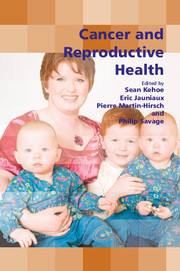
- Cited by 2
-
Cited byCrossref Citations
This Book has been cited by the following publications. This list is generated based on data provided by Crossref.
Jivraj, Shehnaaz Madhuvrata, Priya Vause, Sarah Keriakos, Remon and Hills, Frances 2016. Antenatal Disorders for the MRCOG and Beyond. p. 93.
Vause, Sarah 2016. Antenatal Disorders for the MRCOG and Beyond.
- Publisher:
- Cambridge University Press
- Online publication date:
- October 2014
- Print publication year:
- 2008
- Online ISBN:
- 9781107786110


